My passion for football began at 4 years old when I began to play for local club Ingleburn Eagles. Football was something outside that was fun, it was many years until I was even aware the sport could be a career. I just played the game because I loved it and I got to spend some time with my friends.
While I have a family history in football, my cousin being a former Sydney FC defender and my great uncle being a Goalkeeper for Liverpool FC and Kilmarnock in the 1930’s ultimately I am not a former pro, not a professional pundit, just a guy who wants to see Australian football reach it’s true potential.
This article is not a beat up of FFA, it’s not a football manifesto and I don’t claim to have all the answers, it’s just simply my thoughts on various topics backed by some googling and my acquired knowledge while attempting to build my sports agency over the past two and a half years.
It’s a very long article so I’ve broken it down by topics to make it easier to read and I hope it stimulates interest and conversation that leads to positive changes in the best interest of the game.
I welcome all feedback both positive and negative.
Enjoy!
Funding/Fan ownership
I believe that Australia should follow the example of the Green Bay packers in the NFL, Valour FC in the new Canadian Premier League or Borussia Dortmund in Germany and allow the fans to be shareholders in the club.
This not only allows the fans to be invested in the success of the club off the pitch, but contribute to its success on the pitch. As the fan base grows, Instead of profits made during the season going back to the ownership consortium, available funds is invested in better marquees, new facilities or crazy concepts like a fair wage for the W-League players.
Fans are also given a sense of accountability, where no longer can they solely blame a single investor for lack of resources being put into a club, Encouragement from fellow fans to renew that membership and buy that new jersey with the silver star above the crest, because with your support, next seasons could have a gold star on it.
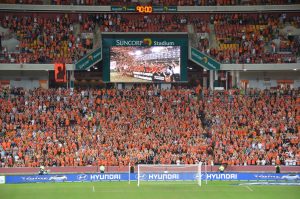
Credit: Flickr/Tiger Benji
A model like this allows for security, encourages long term investment. And whilst we respect and greatly appreciate their contributions to the game, no longer will teams need to bank on the next mining magnate, deli meat king, telecom guru or insurance company and hope they stick around.
Own your club and its success, something you can pass down for generations to come.
Of course, fans cannot provide absolutely every dollar needed to operate a world class football club and allowing investment always should be encouraged but governed to ensure it is in the best interests of the club, the game and its fans.
Ideally we would see more investment and partnerships like the City Football Group, who not only provide the funds for the club, but provide a pathway for players and supporting infrastructure and experience from affiliate clubs that they can also attach their names to.
Ethnic Identity
It’s time the fear of clubs ethnic roots and Australian football is let go. Australia is one of the most successful multicultural communities in the world, our country was built on the back of people coming to this far away land from all over the world to build a better life and contribute to society. Football is the world game and you cant deny the contribution particular ethnic groups have made to developing the landscape that we have today, we celebrate this fact every four years.
I would also note we already have a club in the A-League which represents a particular ethnic origin, Brisbane Roar. The orange colour, the lion. Yep, those are Dutch to the absolute core. So if they can be represented, why do we need the culturally neutral approach to all the other clubs?
While South Melbourne fans may have been chanting ‘Hellas’ last season in the stands, they were supporting their team made up of guys born in Zambia, England and Brazil. Doesn’t sound like a single culture organisation to me!
Personally, I haven’t seen any issues surrounding particular ethnic groups participating in anti-social behaviour, and I have been to hundreds of A-League games over many years. I have however, have read reports of racism, which needs to be removed from the game immediately and we can start by accepting and respecting everyones right to fly whatever flag they wish to fly that represents their origins and community and equal rights to be a fan and participant in the game.
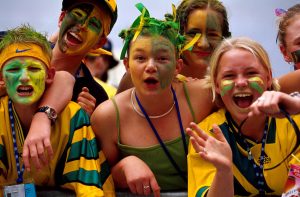
Source: Wikimedia
There is however issues with policing and security that need to be addressed. I have seen first and and posted on social media incidents of over zealous policing and removal from venues with little to no justification. I personally feel NSW has become a bit of a police state where zero tolerance has gone too far and fans have been removed from games for a single swear word, questioning the removal of other supporters and behaviour which wouldn’t raise much than an eyebrow in other leagues across the globe and unfortunately there is no route of retort in place for those who are handed any time of ban on them attending games.
The automatic deployment of the Riot and Public order squad to games seems completely excessive to me and feel it is a total waste of resources that could be better put to use elsewhere in the community as I have never witnessed an event in Australian football that has ever warranted such a heavy presence of extremely expensive police staff and equipment.
A appeals process needs to be developed, it has clearly been asked for by supporter groups for years and the administration has acknowledged and even promised they are working on it, but to this day we are yet to see any progress, proposals or even minor updates.
The governing bodies, clubs, security and police all need to work together to create a better balance that focuses on minimising intruding fans game day experience with heavy handed policing and provides justification on taking action where needed.
Everyone wants a safe and welcoming match day experience for everyone involved, fans, players, officials and staff. No one is arguing with that.
Fan Engagement
Fan engagement and loyalty is largely based on the game day experience, hometown loyalty and accessibility to events.
If you watched the MLS last season, you can see why the fans there are flocking to games and the sport is on an astronomical rise in once a tough market to crack. The US has taken the best ideas from europe, implementing a strong club culture and identity, but has implemented things a lot of fans have been looking for, a safe solution to flares and safe standing areas.
Australia has all the elements and if not potential to have a ideal match day experience, and it starts with getting as many people to the games as possible.
Half of people who played the game are likely to become lifelong fans, and therefore youth football clubs, schools and other youth groups need to be littered with free or heavily discounted tickets.
One thing I notice about the game day experience here in Australia is the difference in planning that fans make around game day, In Europe, if it’s game day, that overrides almost everything else, the party starts early and continues late into the night, In Australia, at best we catch up with a few mates for a few refreshments at a local establishment before hoping security can get them through the gates and maybe grabbing a $10 beer before sitting down.
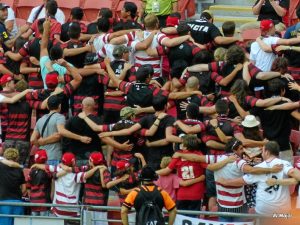
Credit: Flickr/W Major
There are so many opportunities to be had when it comes to getting maximum engagement with fans through hospitality, community groups, art and of course combining games together in ‘super saturday/sunday’ events.
Combining A-League, W-League, Y-League, NPL and NPLW there is an endless amount of combinations to engage all fans and potential fans to their new religion.
Here in Australia by the time the 7:50pm game has finished or if you are watching the 9pm Eastern time Perth Glory game, it’s getting pretty close to kickoff time for the English Premier League games, and there is opportunity to capitalise on further engagement for those who want to kick on, bring in some live bands, food trucks, portable bars and a giant screen and you have an instant venue for a Premier League or Bundesliga party, with every dollar going back into the club and the local game.

Credit: Denise Cross Photography
While in the USA meeting USL clubs I went to a San Antonio Spurs NBA game, in which the after party was perfectly executed. Fans were directed to join the afterparty where a open air band was performing, live coverage of a football game was being aired as well as European ‘soccer’. Fans could then wait for the uber line to turn into something reasonable, the bar was making money, the food outlets remained open and it certainly looked like it was worth the extra hours for staff and the merchandise stand remained open also.
Transport options must be aligned to all events to ensure fans can get to and from games safely, all tickets including NPL games, should include free public transport to avoid congestion, pressure on and requirement for parking facilities and enable those people hitting the bar before and after the game to get home without risk.
The league and clubs need to understand what fans want, adapt to it and reward their loyalty, as clubs can’t solely rely on winning trophies to keep fans engaged. Going to the football should be more than just the football, it should be about having a great time with your mates, family and creating memories.
Media Coverage
Fox Sports currently holds the major rights to broadcast the A-League right now and over the years we have has SBS contribute a lot by giving free to air coverage of the league to the general Australian public and now Channel 10 shows the Saturday night 7:50pm game for free. We have the ‘My Football’ app now which allows users to subscribe and get streaming coverage on their phone of all A-League and W-League football as well as the FFA cup. But I feel there is still more that can be done.

Credit: pxhere
I believe the ultimate digital streaming platform right now is the WWE network. They not only offer the ability to watch all their live events, they also offer an archive of all past events and then complimenting content that keeps it’s fans engaged with their product even when they aren’t watching a wrestling show.
I have heard the argument presented that if we stream everything, no one would come to see the games live. This is simply untrue and has been debunked in a study on live streaming relating to the Scottish Premier League.
By offering a great platform full of comprehensive coverage you enable a lot of things to happen that are deeply beneficial to the game, You can allow people like myself that live in Sydney to become a fan of a club in Melbourne, I’ll watch a few games, become hooked and before you know it, I’ve bought the shirt, the hat, the scarf and have flown down to watch the game live while sampling their famous souvlaki, posting about it on all my social media outlets where my friends become potential fans also.
The USL streams every single one of their games live on ESPN+ which is a paid product in the USA, however through the magic of geographic ID on the internet, international viewers are able to watch every game, for free. You not only then allow a fanbase overseas in every country to grow but also advertise the league to current professional players that might be considering a lifestyle change to see first hand the standard of the game. You allow the visa players mother to see her son in action and share the highlights with the family (more fans!). You allow that promising player to create a highlight video to send to clubs overseas that enable them professional football opportunities. You enable people who simply can’t get to the game because of work, disability, injury, overseas on holiday, to stay engaged.
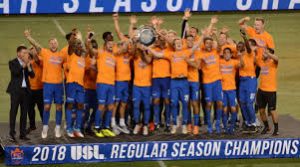
Credit: Hayden Schiff
As a fan I’d love to see a holistic offering that includes coverage of all our football leagues, NPL 1, 2 & 3, WNPL, A-League, Y-League, W-League and then also complementing content. There is a rich vein of local talent on platforms like Football Nation Radio, there are talented local journalists on websites like FTBL and many more outlets. Put them to work! Make engaging original content that gives us something football related to watch when the games aren’t on. Keep us thinking about football all the time!
There is also a myriad of overseas channels we can explore. I have personally tried to offer good coverage of Australian players and coaches through the FNX Network football podcasts and building a fanbase overseas is the direction leagues and clubs of the highest level are focused on.
Lets put the days of searching for a stream, listening via radio like its the 1950’s and tuning into the horse race and the days of limited coverage behind us and showcase and celebrate Australian football by putting it in front of as many people as we can, and on a big screen, every game should be able to be watched on a big screen, not restricted to a five inch screen! I’m looking at you, ‘My Football’ app!
Population
While Australia’s population is relatively small, our engagement in sports is extremely high. Sport is consistently in the top 5 of the most watched programs on TV over the past 15 years.
Going down the ranks of the most populous areas of Australia according to the Australian Bureau of Statistics. Sydney, Melbourne, Brisbane, Perth, Adelaide are all represented by clubs that are well established and supported.
The 6th most populous area of Australia is the Gold Coast. We all know the history here of Gold Coast United and the challenges they faced before becoming defunct. While it’s great to learn lessons from history to avoid making the same mistakes again, a new approach and new group must eventually be given a chance to have another attempt at establishing a club here, considering it’s just down the road from the 3rd fastest growing city in Australia, and 3 of the largest population increases in the state of Queensland were on the gold coast, there’s room to grow!
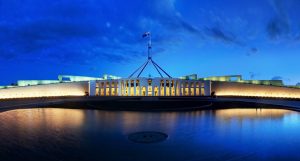
Credit: JJ Harrison
In 8th spot in the biggest cities list is taken by our nations capital, Canberra. We are the only major football nation that does not have a team in its capital, yet currently we have another countries capital in our competition in Wellington Phoenix. Canberra has an existing W-League team, a stadium, an airport and a population of 400,000. Canberra is also the fourth fastest growing capital city in Australia.
Future Expansion
Running a football federation is hard work, and whilst some have criticised the current administration, just keeping the doors open and the lights on is not a small feat, so credit must be given where its due, However, I believe that the current administration has moved too slowly on expanding the A-League and the rollout for West Melbourne and Macarthur SWS.
To make a fair comparison and judgement on how many teams should be in the league, you have to observe countries of similar population and also disposable income to verify its sustainability. Australia has a population of 25 Million and has a per capita income of about $59,000. The Netherlands has a population of 18 Million and a per capita income of about $55,000.
Australia has 10 teams (one being in New Zealand) and next year we will have an awkward 11 teams and no second division. The Netherlands has 18 teams in the first division and 20 teams in the second division which is also professional.
While it’s great to learn lessons from the past in the failures of Gold Coast United, New Zealand Knights and North Queensland Fury, is it a case of once bitten twice shy on rolling out the A-League to more areas of Australia?

Credit: Tim Serong
Adding one team next season in 2019 and another team in 2020 and only beginning talks of a second division now seems like far too of a conservative approach to keep up with the rapidly developing leagues in Asia and the USA.
To retain our top players at all levels of the game we need a highly competitive environment, but also one that offers genuine opportunities to develop as a footballer. With the current amount of teams we have 277 players in total playing professional football in Australia, In the Netherlands, there is over 1000.
If you have a look at the last few mens world cup winners in Spain, Germany and France, they all have one common theme with their national team players. Most of them play in the same league as their team mates and the ones who are playing out of the domestic league are playing at some of the biggest clubs in the world. This allows the players to see each other in action week after week, learn each others styles, anticipate runs, understand each others strengths and weaknesses and ultimately understand how to work best with them, then add in some magic acquired from the likes of Barcelona, Bayern Munich and Manchester City and you have a recipe for success.
Our national teams performances are linked to the health and state of the A-League as this is where the majority of players will be sourced from, have been developed in and the standard of players the national team candidates are playing with.
By expanding our league to 18 teams and adding a second division, we can keep as many of our boys home, with their families, learning each others styles, in an environment we understand and can control. We should only be reliant on sending our promising players to overseas clubs when they present a far superior environment, not because of a lack of opportunities back home.
Installing a second division in Australia must become a priority for the FFA to secure the future of the game in Australia and whilst the responsibility of putting in the structure for the league lays at the decision making of the board, the clubs and the players also must move towards a professional approach to football at this level.
The ‘tough love’ antics of ‘old school’ clubs withholding payments, freezing players out of squads for no justified reason and dishonesty need to come to an end to enable Australia to have a good reputation as an option for professional footballers from here and around the world.
There is no ‘old school and new school’ there’s just the right way, and the wrong way.
If coaches want players to treat their position in your club seriously and the club expects a professional approach from the coach and treat football as their primary career then the same conditions you would expect in a day job need to apply in football. If you are working, you get paid, if you are travelling or working interstate from your home town, you’ll be provided accomodation and if anything else needs arranging that enables the player to do their job, playing football, the club needs to arrange it. Australia has to be able to compete with the offers for players coming from Asia, that get more and more lucrative with high wages, clubs arranging cars, sponsorships and much more. Yes, this requires a lot of money and running a football club is an expensive operation and there are many restrictions on resources, but clubs around the world manage to find investment and fan ownership models as I previously mentioned that enable this.
Implementing a second division is not as straightforward as it may seem. Money, Facilities, TV coverage, ratings and rights, competing codes are all factors that need to be carefully considered when finalising a plan for a important piece in the future of Australian football.
The focus of the second division needs to be on developing players for the A-League, by providing a full time professional environment that shows the level of commitment required to be a professional footballer.
Players also need to hold themselves accountable for their performances on the pitch, their behaviour off the pitch and realise that becoming a professional footballer in this country means that you become an ambassador for the game, a role model for young people, an idol for those who do not have the capability to chase their dreams as a professional footballer and someone that can be depended on to put in their best effort for the club, week in week out and not just show up for a paycheque.
Policies that promote the use of younger players and their promotion to A-League clubs need to be installed. Older players who bring A-League experience have their place in the league, to mentor the next generation and provide leadership but must be held to account in the level of their performances and contribution to the squad as much as anyone else In the squad.
Promotion/Relegation
Promotion and relegation clearly is something every Australian football fan wants to see. However, to herald promotion and relegation as a solution to some of the challenges that Australian football faces would be worshipping a false idol.
To have a successful promotion and relegation system, if there are 18 clubs in the top division, you need at least another six to be competitive in the second division to keep it interesting.
Moving from the NPL to the A-League right now is a big jump financially due to the cost of Marquee and visa players to compete with the established A-League clubs with international capped stars collecting a few million per year. Even with the most informed recruitment of players going from a total wage bill of ~$150,000 in the NPL to investing money to compete against teams that can recruit higher quality with multi million dollar budgets poses the risk of pricing some clubs out of the competition. This could be controlled and made sustainable through the use of the salary cap however it adversely affectedly the potential growth of the league by big investment by the clubs win the league with deeper pockets.
There also needs a significant investment in facilities, a stadium that seats at least ~8000 people is required, plus parking and adequate facilities that can cope with that amount of people. There needs to be room for the VAR equipment, press boxes, this isn’t something you can just pop a camping shade over and pickup a few chairs from Bunnings.

Credit: Cindy N@Flickr
There has got to be a criteria on competing in the first division to maintain the standard of prestige in the league, and while it is unfair that if a team was able to reach the highest tier of football on a very small budget there are other factors that wouldn’t allow them to sustainably participate in the league such as FFA licence fees, TV rights and the inflation of player wages.
A well thought out slow implementation over time for promotion and relegation is the best way forward, to allow new clubs in the a-league to get over the initial capital outlay of creating a new team, allowing the second division teams to mature and build the infrastructure required to meet the standards and source the required financial investment and build a sustainable fanbase. Perhaps an interim US style conference system is needed to give the clubs a competition to mature in while they invest and build towards a future where they can fight to play top flight.
Whilst we are years away from implementing a true promotion and relegation system in reality, the conversation and planning needs to begin now so everyone knows what to expect, what we are aiming for and to make sure we get it as right as possible.
Wellington Phoenix
While Wellington has contributed to the game over the years, I feel the time has come for New Zealand to develop it’s own professional football league and allow its licence to be put toward expanding the amount of teams across Australia.
A strong professional New Zealand football league would be highly beneficial to us in many ways, local competition is a great thing, it pushes Australia to improve it’s offering and it gives us quality opponents to measure ourselves against.
Having the Phoenix in our league actually presents us with a few issues including visa player rules, because New Zealand players are considered foreign players in the Australian teams, the scenario of the Phoenix winning a spot in the Champions League, where Australian clubs are part of Asia, the ‘Nix and New Zealand are part of Oceania.

Credit: Кирилл Венедиктов/Wikimedia
New Zealand, like Australia has always been a big sporting nation, and in 2010 they showed the world they are a force to be reckoned with when they drew every game, in the same group as Paraguay, Slovakia and Italy.
Team Wellington represented Oceania at the world club cup this year lead by New Zealand Under 17’s Supercoach Jose Manuel Figueira, his second major FIFA tournament in twelve months. Team wellington faced UAE gains Al Ain. Al Ain’s Swedish striker Marcus Berg nets a salary of around $4,972,000 a season, which alone would fund all ten teams of the ISPS Handa Premiership in New Zealand, let alone the rest of the squad! This proves New Zealand has the coaching staff and quality of players to make a professional league sustainable and carve its own path as another force in the developing football nations club.
Salary Cap
The salary cap is intended to stop players wages from going the lines of the English Premier League, inflated to the max. But keeping a lid on how much we can spend here does not stop clubs from overseas coming in and poaching our best players getting bargains below market value and luring the player with higher wages and better conditions.
While we will still see the richest teams win year after year, being able to afford top tier Marquee players like Honda (sometimes with the FFA’s guest player rule assistance) you will still see a natural promotion of our best talents to the bigger clubs overseas, currently Australia has the 27th highest average salary which indicates we have room to grow considering our nominal GDP is around 13th in the world.
The decision by the Federal government to no longer allow celebrities and athletes to license their image rights to another entity puts even more pressure on raising or eliminating the salary cap to remain competitive in a world marketplace that loves words like ‘net’ and ‘euros’ and ‘pounds’ as foreign players are subjected to tax rates up to 45% on salaries of as little as $180,001 which in the football world is a pretty low salary for a top tier team. I wonder if anyone has crunched the numbers on providing a tax break for athletes compared to the potential revenue and attention that is brought to Australian clubs and thus the economy? I guess thats a conversation to be had between the governing bodies and the government to get the balance between contribution to our society through taxes and attracting the best talent we can to continue to grow the sport.
In the current environment, players and clubs are simply riding out the usual short contract lengths and acquiring players for nothing with the lure of silverware, bonuses, bigger salaries and to be put in the spotlight of cashed up clubs overseas.
A-League clubs are also snatching up all the best talent from NPL clubs on a free, contributing nothing back to the system that developed them, leaving clubs to pick up the bill developing the next big Aussie 20 goal a season striker, assist machine or brick wall defender.

Credit: Eric Berry aka Efcso/Wikimedia
If the FFA intends to keep the salary cap it needs to significantly increase it and structure it in a way the allows clubs to hang onto the best domestic talent and invest in youth before all else.
If the FFA intends to scrap the salary cap it needs to go hand in hand with changes to investment rules to allow teams to source the funds necessary to compete in the new environment and allow the smaller clubs to remain financially sustainable and competitive.
Transfer Fees between clubs
To stop small clubs being raided year after year the FFA implemented a ban on transfer fees, but considering the likes of Central Coast Mariners are raided of their best young players year after year and Sydney and Melbourne clubs constantly the ones buy-in them up, it doesn’t seem effective anymore.
It also doesn’t incentivise clubs to develop and sell on youth players like the large European clubs do to turn a profit, which becomes a supplemental income source for the club.
By allowing transfer fees between clubs it also avoids players holding clubs ransom for a release when they are unhappy or have received an offer they cant refuse or is a far better fit for them.
It’s simply time for the transfer fee ban to be abolished.
Youth Player Quota/Y-League
The late great Les Murray wrote a piece in 2017 addressing a youth quote only two months before he passed away, one which I completely agree with.
Les mentioned the fact that Pele won the world cup at only seventeen years old and in todays environment, Pele would be still sitting in the youth team.
Looking at the raw numbers on youth players in the A-League. Australia has a similar average player age than that of the Netherlands, however when you dive a bit deeper into those numbers, the amount of minutes the young players are receiving is a real issue. Some young A-League prospects are only given three 15 minute substitutions for the first team to make an impact in an entire season, and to the frustration of some fans we see the same 30+ year old players on their fifth or sixth club in the A-League given countless minutes, sometimes seemingly without holding them to account for their performances and contributions.
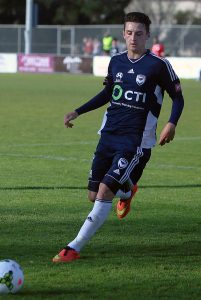
Credit: Paladisious/Wikimedia
Unless the club is restricted by finances and is forced into experimenting with youth players to unearth cheap and effective diamonds from the fertile soil of the NPL, they are signing the same ‘proven’ names year after year, in a culture that comes across as risk adverse and an environment that disregards the development of potential talent, leaving young players starved for minutes that ultimately restricts their potential and forces them to go hunting anywhere in the world for a pro contract. We have seen many players snubbed by the A-League who go hunting overseas for those golden playing minutes only to sit on a bench overseas, come back frustrated and in the worst case scenarios get frustrated and give up completely.
Coaches seem unwilling to take a risk on a young player in the fear they will ultimately have to be held accountable for that decision and lose their job.
With the absence of transfer fees between clubs, no quota on youth, no minimum minutes, where does the incentive lay for clubs to invest in youth? Where is the Socceroos of the future going to come from when the highly recycled 31+ year olds become 35 and retire from the game?
Not only should there be a quota, there should be rewards for clubs in the A-League and NPL who give youth a chance, they are contributing positively to Australian football.
In my view there definitely should be a quota system in the A-League that is more generous to the kids. Left to their own devices, the coaches simply won’t give them a chance – Les Murray
W-League
Women are the future of Australian football. Some have tipped the Matildas to be world champions come the end of the Womens World Cup in France June 2019, and probably our only hope of an Australian national team winning a world title in our lifetime.
The W-League is attracting some national team capped stars from the top womens footballing nations like the USA and England.
Implementing a minimum wage was a step in the right direction, but more must be done to encourage women to pursue a professional football career as there is strong competition from other codes such as the AFLW and NRL Womens Premiership.
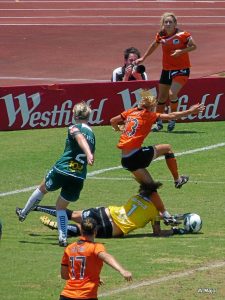
Credit: W Major@Flickr
W-League (and Y-League) licences should be packaged with A-League licences to encourage teams to invest in youth and womens football and increase the number of professional football opportunities available to young women especially. There also needs to be incentive for clubs to invest in the W-League, perhaps through salary cap exemptions, reduced licensing fees and so on.
The scheduling of W-League games also needs to be further aligned with A-League, NPL and the Y-League to ensure the maximum amount of fans can attend and be aware of our womens game.
The disparity of wages between male and female athletes is a big concern and one that leagues around the world are beginning to address with New Zealand announcing their male and female players will receive the same pay.
Equal access to facilities should be a given, Men and Women should be training on the same pitches, have the same standards of change rooms, training grounds, medical facilities and gyms.
Visa Spots and Player points
The review of foreign player rules goes hand in hand with the conversation surrounding the salary cap as it’s impossible to allow more foreign players into the league without abolishing the cap or significantly increasing it to the point where a cap would be pointless anyway.
The implementing of the 4+1 system to follow Asian Champion League rules, to ensure that the visa players we have are of the highest quality, engages Australia in the Asian football community and allows for Australian players to be rewarded as high performers was a step in the right direction for the A-League.

The recruitment of foreign Marquees over the years has been hit and miss, we have seen brilliant signings such as Alessandro Del Piero and Keisuke Honda who have not only Brough quality on the pitch but have contributed off the pitch implementing higher standards and demanding more out of their Australian peers, on the other hand we have seen a slew of players that come to Australia on a paid vacation and seem disinterested in the results of the team or the level of their individual performances. The fans can sense the difference between the two and want to see players showing passion when wearing the badge, not collecting their paycheque.
In the second division of Australia, the NPL, we have a messy system of player points that causes an administrative nightmare for clubs, only two visa spots that ultimately limits growth of the game. The higher points value for players over 25 is something that needs to be reviewed given there is rarely a signing of an NPL player over 25 to an A-League club and given there are already limited positions available to domestic players in the A-League.
Limiting older players in the NPL could easily be controlled by implementing a youth quota in squads across the board as discussed above.
Coaching
Only six foreign coaches out of a total of 70 A-League coaches has ever coached more than 2 seasons in the A-League and thus makes me question if the investment in foreign coaches has been worth it.
Out of 13 A-League coach of the year awards, 8 have been handed to Australian coaches.
Attracting top foreign coaches to Australia is an extremely hard task considering our long distance from most other major football markets, low budgets for wages compared to our Asian neighbours, high taxes and little recognition for being successful here.
So why do clubs keep bringing in foreign coaches instead of giving our local guys a chance? Mark Rudan has proven at Wellington Phoenix this year that translating success as a coach from the NPL to the A-League is very much possible.
Australia has a wealth of good coaching talent to this day have not been given a chance to apply their trade at the highest levels of Australian football.
Just like I have suggested with players throughout this piece, high performers must be rewarded domestically otherwise they will seek opportunities overseas which again takes their development out of our hands and is placed in the care of a foreign entity that may employ different styles, have different standards they aspire to and operate in a culture completely different to our own.
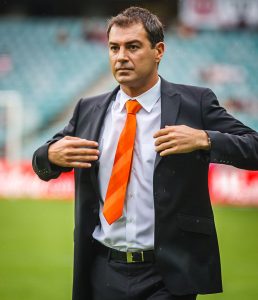
Credit: Camw/Wikimedia
As mentioned above, ‘Old School’ coaches who use negative reinforcement or ‘tough love’ are being shown the door, the ultimate example being in Manchester. Sporting the red, Old school coach Mourinho implements a ‘my way or the highway’ approach that freezes players out of the squad, leads to personality clauses, transfer requests and a string of poor results, while sporting the blue it was well documented in the ‘All or nothing’ documentary that Pep employed a coaching style that builds a positive and supporting culture where players are part of a family. One has noticeably had more success than the other in recent days.
Players should never chase the label of ‘the next messi’ or ‘the next ronaldo’ because simply put there is no such thing. Players are told by good coaches to carve their own path as the first ‘them’ because as humans we have our own unique set of strengths and areas of opportunities.
I therefore ask the question why Tony Popovic and the Western Sydney team a few years ago would state ‘We want to play like Barcelona’ and Graham Arnold to state ‘We want to play like liverpool’ when infact they should be wanting to play like Western Sydney Wanderers or play like the Socceroos and work hard on defining our style given the strengths and areas of opportunity of the current squad, not a cheap imitation of a style that doesn’t play to the dynamics of our squad. If we have a 5 foot 5 inch striker, you might want to reconsider playing a long ball game. If thats the best tactic against our opponent, you might want to pick a different striker.
At a national level, the style and coaching methods from top to bottom need to be aligned to enable players who are called up to the first team to understand the tactics, set plays and other elements employed throughout the national team setups. With a disjointed approach, each level may have a different style and a mismatch in chemistry can occur leading to a clash in styles and poor performances overall.
Australia must invest more into developing high quality pro licensed coaches who can not only guide the future of Australian football to new heights but fly the flag to show the potential of Australian football to foreign clubs, national teams and players.
Refereeing
Who would want to become a referee? The ultimate villain when you make a controversial call and given a hotdog and a handshake when you have a blinder.
It’s truly a tough job and more credit needs to be given to the policing authority that allows us to enjoy the game roughly by the rules and when done correctly, enforces with fairness whilst letting the game continue to capture the crowds attention.

Credit: Camw/Wikimedia
One indicator of a good culture of refereeing I was told, Is how many referees represent your federation at the World Cup. In Russia 2018, Australia had no referees represent the AFC, not even an assistant referee. In 2014, we only had one referee, Ben Williams represent us, In 2010 we had no referees represent Australia, Mark Shield represented Australia in 2006 and 2002.
Is 2 referees in 5 world cups a bad sign? We are one of the most prominent Asian football countries.
The FFA made a very positive move when they employed referees on a full time basis beginning in 2015 with Chris Beath, Jarred Gillett and Ben Williams. We now have added Shaun Evans and Kris Griffiths-Jones but clearly more needs to be invested into developing quality referees that are viewed as world class and that are representing Australian football at the highest levels, with shining performances.
In a game measured in nanoseconds and millimetres these days, the highest levels of accuracy are demanded, referees more than ever rely on quality support from the assistant referees and the ultimate tool of controversy, VAR.
VAR has become a distraction for the natural flow of the game, whilst in theory, it’s a good idea, to hold everyone accountable with the highest level of accuracy and fairness, however, it’s current execution interrupts the game likened to a reality television game show where the audience is hanging on shock decisions that seem to go either way without any insight into the reasoning or ruling until we get a politically correct worded answer in the post match interview.
As a fan of the Bundesliga, VAR is also used, but just seems to work more logically and be less intrusive on the game? I can understand however, this is still a relatively new concept that everyone is adjusting to, including the people pressing the big red and green buttons, but a continuing conversation about consistent improvement on it’s execution and implementation needs to be established. I also feel that it’s use and coverage of decisions seems ‘patchy’ – where some areas of the game are covered yet, others are not, we don’t restrict the referee on the field to calling certain decisions and the video referee, is an official as much as the assistants are, perhaps the jurisdiction of the video referee needs to be all or nothing.






